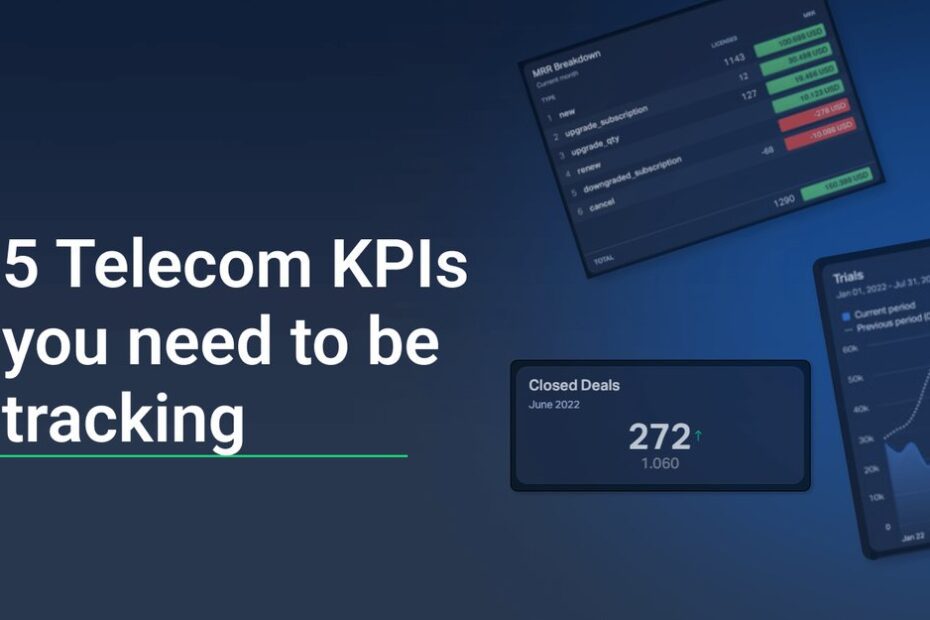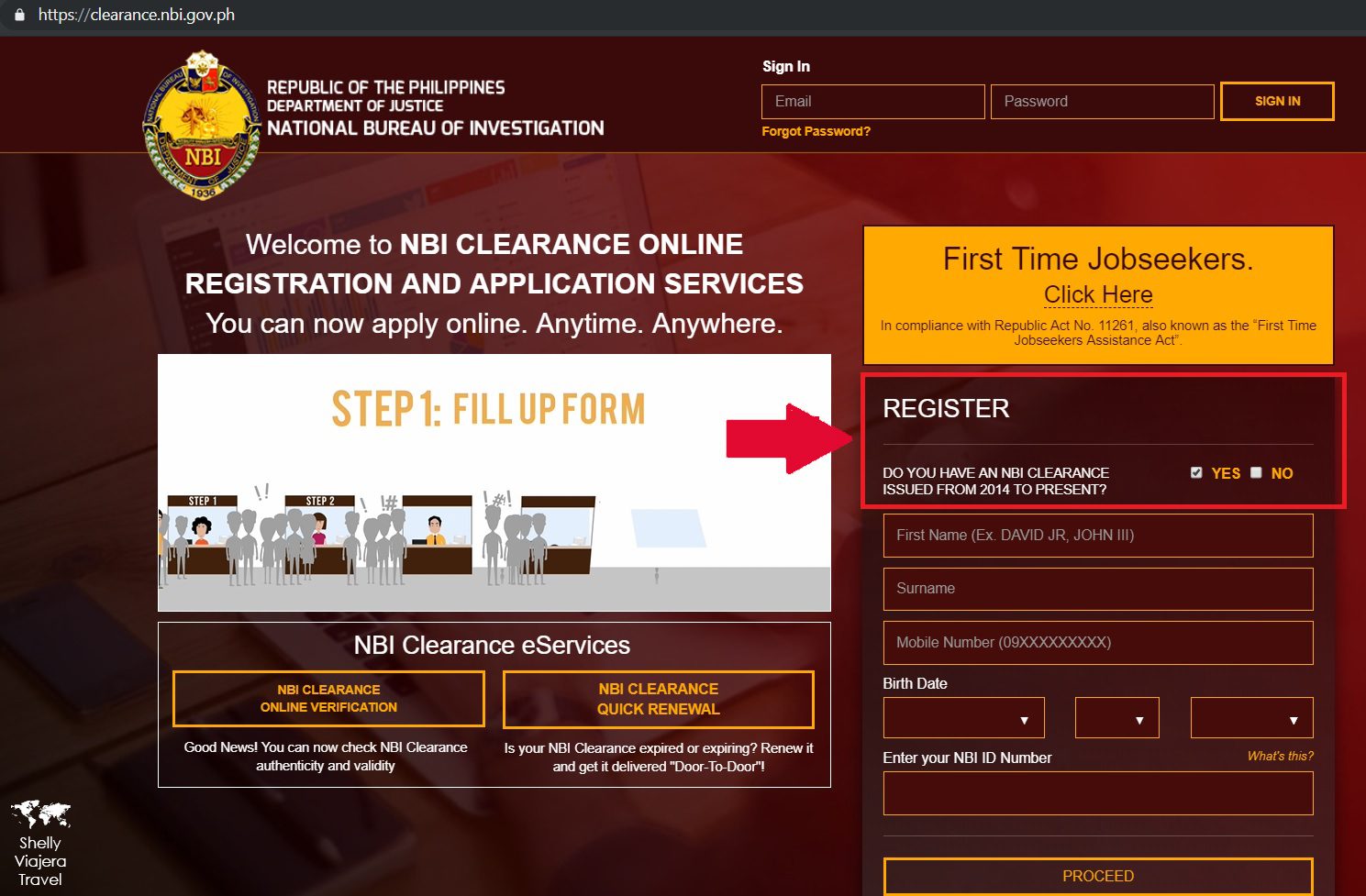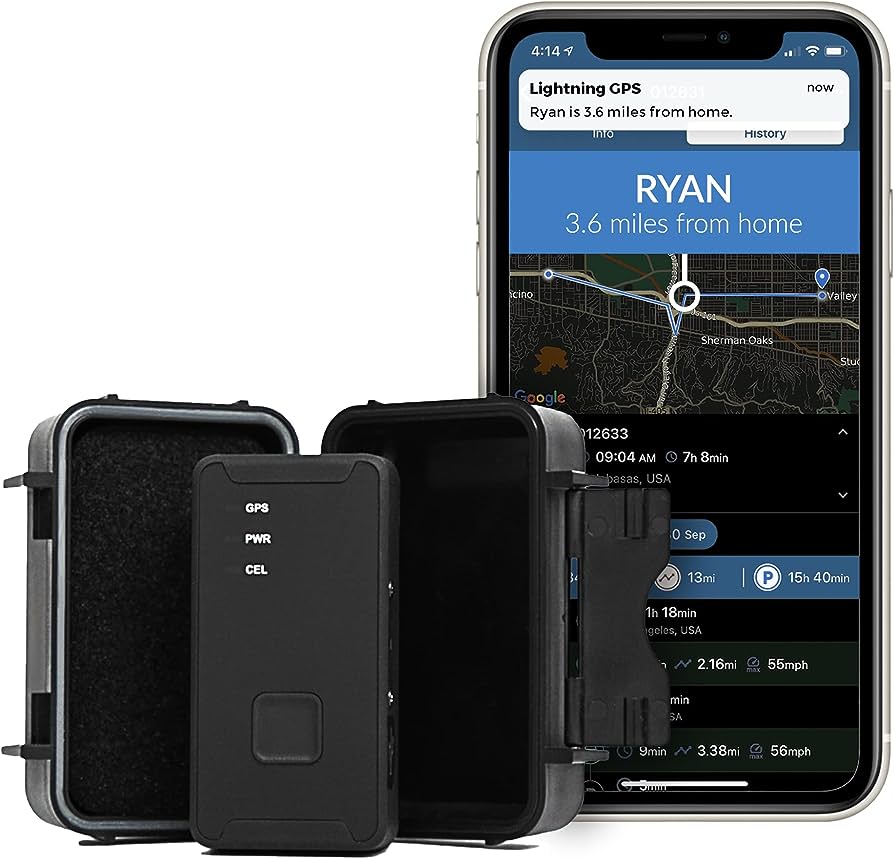To track KPIs, establish clear metrics and regularly monitor and analyze relevant data. In doing so, you can gain valuable insights, measure performance, and make informed strategic decisions.
Tracking Key Performance Indicators (KPIs) allows businesses to gauge their performance, measure success, and identify areas for improvement. By monitoring and analyzing specific metrics, businesses can gain valuable insights into the effectiveness of their strategies and make data-driven decisions. However, it is crucial to establish clear KPIs that align with business objectives and regularly track and analyze the relevant data to ensure accurate measurement.
We will explore effective methods and tools for tracking KPIs, providing tips and insights to help businesses effectively monitor and optimize their performance.
The Importance Of Tracking Kpis
Tracking KPIs is crucial for evaluating performance and making informed decisions. Learn effective strategies to track and monitor your KPIs, ensuring clarity and success in achieving your goals.
Understanding The Significance Of Tracking Kpis
Tracking Key Performance Indicators (KPIs) is an essential activity for any business looking to achieve success and growth. Without a clear understanding of your company’s performance metrics, it becomes difficult to measure progress, make informed decisions, and effectively manage your resources.
In this section, we will explore the importance of tracking KPIs and the impact it can have on your business.
Impact Of Effective Kpi Tracking On Business Success
Effective KPI tracking provides valuable insights and benefits that directly contribute to the overall success of your business. Let’s dive into the impact that proper tracking can have:
- Measure performance: Tracking KPIs allows you to measure your business’s performance against specific goals and objectives. By monitoring KPIs regularly, you can identify areas of improvement or areas where you’re excelling. This data-driven approach helps you make informed decisions to drive growth.
- Identify trends and patterns: Tracking KPIs over time reveals trends and patterns in your business operations. Analyzing these trends provides valuable insights into what affects your business performance and allows you to take proactive steps to capitalize on opportunities or address issues promptly.
- Make data-driven decisions: With accurate KPI tracking, you can make informed decisions based on real-time data rather than relying on assumptions or guesswork. This data-driven decision-making approach ensures that you allocate resources, budgets, and efforts efficiently and effectively, leading to improved overall performance.
- Enhance accountability and transparency: Tracking KPIs fosters a culture of accountability within your organization. When individuals or teams have clear KPIs to track, it becomes easier to hold them accountable for their performance. Moreover, transparently sharing KPI data with stakeholders cultivates trust and fosters a shared sense of responsibility for achieving organizational goals.
- Facilitate goal alignment: Tracking KPIs enables you to align individual or departmental goals with broader organizational objectives. This alignment ensures that everyone is working towards the same vision, resulting in improved collaboration, streamlined processes, and enhanced overall performance.
- Identify areas for improvement: By tracking KPIs, you can identify specific areas where your business might be lacking or struggling. Whether it’s customer satisfaction, employee productivity, or revenue, KPI tracking helps pinpoint areas that require attention and allows you to implement actionable strategies for improvement.
- Drive continuous improvement: KPI tracking facilitates continuous improvement by providing ongoing feedback on your performance. With regular monitoring, you can identify what works well and what needs refinement, allowing you to continuously iterate and optimize your business strategies and processes.
Tracking KPIs is not just about monitoring numbers; it’s about gaining valuable insights into your business’s performance and leveraging this information to drive growth and success. When done effectively, tracking KPIs empowers you to make data-driven decisions, measure progress, and proactively address challenges.
So, embrace the significance of KPI tracking and unlock the full potential of your business!
Setting Smart Kpis
Setting SMART KPIs is essential for tracking and measuring progress towards goals. This method ensures that Key Performance Indicators are specific, measurable, attainable, relevant, and time-bound, allowing businesses to effectively monitor their performance and make data-driven decisions.
Explaining The Concept Of Smart Goals For Kpis
Setting SMART (Specific, Measurable, Achievable, Relevant, Time-bound) KPIs is essential for effective performance tracking and goal attainment. This framework provides a clear and structured approach to defining KPIs that align with business objectives and can be easily communicated and measured.
Let’s delve deeper into each element of SMART goals to understand their significance:
**Specific:** Clearly define the objective of the KPI to ensure a focused approach.
- Bullet point: Identify the specific outcome required from the KPI.
- Bullet point: Avoid ambiguous or broad objectives that may lack clarity.
**Measurable:** Establish criteria for measuring the progress and success of the KPI.
- Bullet point: Determine the quantitative or qualitative metrics to track.
- Bullet point: Ensure the availability of relevant data to measure the KPI effectively.
**Achievable:** Set realistic targets that are attainable within the given resources.
- Bullet point: Assess the feasibility of achieving the set targets.
- Bullet point: Consider the capabilities, available resources, and limitations while determining the goals.
**Relevant:** Align the KPIs with broader business goals and objectives.
- Bullet point: Ensure that the KPI is directly tied to the overall success of the organization.
- Bullet point: Avoid setting goals that are unrelated or inconsequential to the business’s purpose.
**Time-bound:** Establish a specific timeframe or deadline for achieving the KPI.
- Bullet point: Define a specific start and end date for the KPI measurement.
- Bullet point: Create a sense of urgency and accountability by setting deadlines.
By incorporating the SMART criteria into your KPI-setting process, you can ensure that your goals are specific, measurable, achievable, relevant, and time-bound. This approach enhances clarity, helps with tracking progress, and increases the likelihood of successful outcomes in line with your business objectives.
Remember, a well-defined and strategic KPI framework is the foundation for effective performance tracking and continuous improvement.
Identifying Key Performance Indicators
Key Performance Indicators (KPIs) play a crucial role in tracking business success. By identifying the right KPIs, you can measure and evaluate progress towards your goals, making informed decisions for growth and improvement. Tracking KPIs allows you to monitor performance, optimize strategies, and ultimately drive success.
Determining The Most Relevant Kpis For Your Business:
To effectively track your business’s performance, it is crucial to identify the most relevant Key Performance Indicators (KPIs) that align with your objectives. By defining specific metrics to measure, you can gauge your progress and make data-driven decisions. Here are some essential steps to determine the most relevant KPIs for your business:
- Understand your business goals: Begin by clearly defining your business goals and objectives. What do you want to achieve? Identifying your desired outcomes will help you focus on the most important areas of your business to track.
- Conduct a SWOT analysis: Perform a SWOT (Strengths, Weaknesses, Opportunities, and Threats) analysis to gain insights into your business’s internal and external factors. This analysis will help you identify areas where you need to improve or capitalize on opportunities.
- Break down your goals into measurable components: Once you have established your objectives, break them down into smaller, measurable components. Identify the key factors that directly contribute to achieving each goal.
- Determine the data you need: Consider the type of data you need to track your progress. This could include financial data, website analytics, customer feedback, or sales metrics. Choose data that aligns with your goals and can provide meaningful insights.
- Analyze industry benchmarks: Research industry benchmarks to understand how other businesses in your field measure success. This can help you set realistic targets and compare your performance with competitors or leaders in your industry.
- Involve stakeholders: Consult with key stakeholders such as managers, team leaders, and employees who have valuable insights into your business processes. Their perspectives can help identify KPIs that are more meaningful and relevant to success.
- Prioritize KPIs: Consider the importance of each KPI based on its relevance to your business goals. Prioritize the most critical metrics that directly reflect your progress and success.
By following these steps, you can determine the most relevant KPIs for your business and start tracking them effectively. Remember that your KPIs may evolve over time, so regularly review and adjust them to ensure they align with your changing objectives and market conditions.

Credit: www.gofclogistics.com
Implementing A Kpi Tracking System
Tracking KPIs is essential for business success. Implementing a KPI tracking system allows you to monitor and analyze key performance indicators, giving you valuable insights to make informed decisions and drive growth.
Once you have identified the key performance indicators (KPIs) that align with your business objectives, it’s time to implement a robust tracking system. This will allow you to monitor and measure your progress towards achieving those KPIs. In this section, we will explore two essential aspects of implementing a KPI tracking system: selecting the right tracking tools and software, and integrating KPI tracking into existing systems.
Selecting The Right Tracking Tools And Software:
- Consider the specific needs of your business and the KPIs you want to track. Evaluate the available tools and software to find the best fit.
- Look for tools that provide flexibility and customization options, allowing you to track KPIs according to your unique requirements.
- Ensure that the tracking tools and software you choose integrate well with your existing systems, such as your website, CRM, or marketing automation platforms.
- Check for features like real-time data updates, customizable dashboards, and built-in analytics capabilities.
- Look for tools that offer user-friendly interfaces and provide clear visualizations of your KPI data.
- Don’t forget to consider the scalability of the tracking tools and software to accommodate future growth.
Integrating Kpi Tracking Into Existing Systems:
- Evaluate your current systems to identify areas where KPI tracking can be seamlessly integrated.
- Work closely with your IT department or software vendors to ensure a smooth integration process.
- Define data collection processes and establish data governance protocols to maintain accuracy and consistency.
- Determine the frequency of data updates and reporting, taking into account the needs of different stakeholders.
- Train relevant team members on how to use the tracking system effectively and interpret the KPI data.
- Regularly review and analyze the KPI data to identify trends, insights, and areas for improvement.
- Consider automating data collection and reporting processes to enhance efficiency and reduce human errors.
By carefully selecting the right tracking tools and software, and integrating KPI tracking into your existing systems, you will be able to monitor your progress effectively and make informed data-driven decisions. Remember, a well-implemented KPI tracking system is crucial for achieving your business objectives and driving continuous improvement.
Collecting And Analyzing Kpi Data
Collecting and analyzing KPI data is crucial for tracking key performance indicators. By carefully monitoring these metrics, businesses can gain valuable insights to make informed decisions and improve overall performance.
When it comes to tracking KPIs, one of the most crucial steps is collecting and analyzing the data. This process enables businesses to gain valuable insights and make informed decisions based on the performance metrics they gather. Creating a data collection strategy and analyzing KPI data are two key components of this process.
Let’s delve deeper into each of these areas:
Creating A Data Collection Strategy
To effectively track KPIs, it is essential to have a well-defined data collection strategy in place. Here are some key steps to consider when developing your strategy:
- Identify relevant KPIs: Determine which Key Performance Indicators align with your business goals and objectives. This will help you focus on the most critical metrics that contribute to your success.
- Define data sources: Determine where you will gather the necessary data for tracking KPIs. This could include various sources such as web analytics tools, customer feedback systems, or internal databases. Ensure that these sources provide accurate and reliable data.
- Set up data collection methods: Implement the necessary tools and technologies to collect the required data. This could involve setting up tracking codes, implementing data collection forms, or integrating APIs.
- Establish data collection frequency: Decide how often you will collect KPI data. This could range from real-time tracking to daily, weekly, or monthly updates. Consider your business needs and the frequency at which changes occur.
- Ensure data integrity: Implement measures to ensure data accuracy and integrity. This includes validating data inputs, monitoring data quality, and implementing data cleansing processes.
By following these steps, you can create a robust data collection strategy that lays the foundation for effective KPI tracking.
Analyzing Kpi Data To Gain Insights And Make Informed Decisions
Once you have collected the necessary KPI data, the next step is to analyze it to extract valuable insights. This analysis allows you to understand how your business is performing, identify trends, and make informed decisions based on the data.
Here are some key aspects to consider when analyzing KPI data:
- Identify patterns and trends: Look for recurring patterns and trends in your KPI data. This could involve identifying seasonal fluctuations, identifying correlations between different metrics, or detecting anomalies.
- Compare against targets or benchmarks: Compare your KPI data against predefined targets or benchmarks. This provides context and helps evaluate performance against the desired goals.
- Segment and drill down: Break down your KPI data into different segments to gain deeper insights. This could involve segmenting data by customer demographics, geographic regions, or product categories. By drilling down into specific segments, you can uncover hidden insights and identify areas for improvement.
- Visualize data: Use data visualization techniques such as charts, graphs, or dashboards to present your KPI data visually. Visual representations make it easier to understand complex data and identify trends at a glance.
- Monitor progress over time: Continuously monitor your KPI data over time to track progress and identify long-term trends. This allows you to adjust strategies and tactics if necessary to achieve desired outcomes.
By analyzing KPI data effectively, businesses can gain valuable insights into their performance and make data-driven decisions that drive success.
Tracking KPIs requires a thoughtful approach to collecting and analyzing data. By creating a data collection strategy and leveraging effective analysis techniques, businesses can gain valuable insights that help them make informed decisions and drive growth.
Visualizing Kpis For Better Understanding
Learn how to effectively track KPIs by visualizing them, gaining a better understanding of your business’s performance. Visual representations help simplify complex data and showcase key metrics for improved decision-making.
Presenting Kpi Data In Visual Formats
Visualizing KPIs is an essential practice for better understanding and effective communication of data. By using dashboards and charts, businesses can present KPI data in a visually appealing and easy-to-grasp format. This section will explore the benefits of visualizing KPIs and the various techniques to achieve this.
Benefits Of Visualizing Kpis:
- Enhances comprehension: Visual representations of KPI data make it easier for stakeholders to understand complex metrics and trends at a glance.
- Promotes quick decision-making: Visualizations enable stakeholders to quickly identify patterns, outliers, and significant changes, facilitating prompt decision-making.
- Facilitates data-driven discussions: Visualized KPIs provide a common ground for discussions, promoting effective collaboration and aligning stakeholders on important metrics.
- Simplifies communication: Visual formats simplify the communication of KPIs across different departments and teams, ensuring a shared understanding of performance and goals.
Using Dashboards And Charts For Clear Communication:
- Dashboards: Dashboards collate multiple KPIs into a single interface, offering a comprehensive view of an organization’s performance. They often include interactive features, allowing users to customize the data they see. Dashboards facilitate real-time monitoring and tracking of KPIs, resulting in proactive decision-making.
- Line charts: Line charts are useful for representing trends over time. By plotting KPIs on a time series axis, line charts help identify patterns, seasonal variations, and long-term performance trends.
- Bar charts: Bar charts are effective for comparing KPIs across categories or time intervals. They provide a visual representation of performance differences, making it easy to identify the best-performing or worst-performing areas.
- Pie charts: Pie charts display the proportion of different components that contribute to a whole. They are ideal for showcasing the distribution of KPIs and the relative size of various elements within a dataset.
- Gauge charts: Gauge charts visually represent a single KPI’s status or progress towards a specific goal. With a clear indication of performance against predetermined targets, gauge charts offer a quick overview of KPI success.
Visualizing KPIs through dashboards, line charts, bar charts, pie charts, and gauge charts enhances understanding, promotes data-driven discussions, and simplifies communication. By presenting KPI data in visually appealing formats, businesses can grasp insights quickly, make informed decisions, and foster collaboration across teams.
Monitoring Kpi Progress And Trends
Track and analyze your KPI progress and trends effectively with these tips to monitor performance and make data-driven decisions. Stay informed and optimize your strategy for better results.
Monitoring the progress and trends of your Key Performance Indicators (KPIs) is crucial for ensuring the success of your business. By regularly tracking and analyzing KPI data, you can identify patterns, detect areas of improvement, and make informed decisions to drive growth.
Here are some essential steps to effectively monitor and analyze KPI progress and trends:
Establishing Regular Monitoring And Reporting Processes:
- Create a clear reporting structure: Define who will be responsible for monitoring and reporting on KPIs and establish a regular reporting schedule.
- Set up a reporting dashboard: Utilize data visualization tools or spreadsheets to present KPI data in an easily understandable format.
- Determine relevant metrics: Identify the most important KPIs for your business and ensure they align with your overall objectives.
- Establish data collection methods: Determine how you will collect data for your KPIs, whether it’s through manual inputs, automated systems, or a combination of both.
Identifying Trends And Patterns In Kpi Data:
- Analyze historical data: Review past KPI data to identify trends and patterns over different time periods, such as monthly, quarterly, or annually.
- Conduct trend analysis: Compare current KPI performance with historical data to identify any significant changes or deviations.
- Look for correlations: Identify relationships between different KPIs to gain insights into how they may influence each other.
- Use visualizations: Utilize charts, graphs, or other visual representations to highlight patterns or anomalies in your KPI data.
- Consider external factors: Take into account external influences such as market trends, seasonality, or industry benchmarks when analyzing KPI performance.
By establishing regular monitoring and reporting processes and effectively analyzing KPI data, you can stay on top of your business’s performance and make data-driven decisions. Monitoring KPI progress and trends allows you to proactively address challenges, capitalize on opportunities, and drive continuous improvement.
So, take the time to track your KPIs and unlock valuable insights for the success of your business.
Adjusting And Optimizing Kpis
Track and optimize your KPIs effectively to drive success. Learn the best practices for adjusting and optimizing KPIs for improved business performance.
Evaluating Kpi Performance And Identifying Areas For Improvement:
When it comes to tracking KPIs, evaluating their performance is crucial. By assessing how well your KPIs are performing, you can identify areas that need improvement and make data-driven decisions to optimize your strategies. Here are some key steps to evaluate KPI performance and identify areas for improvement:
- Review performance metrics: Analyze the data and metrics related to your KPIs to understand their current performance. Look for trends, patterns, and areas of strength or weakness.
- Compare against targets: Compare actual KPI results with the targets you have set. This helps you assess if you are on track to achieve your goals or if adjustments are needed.
- Seek feedback: Gather feedback from relevant stakeholders, such as team members, clients, or customers, to gain insights into their perception of KPI performance. This can provide valuable perspectives you may not have considered.
- Conduct root cause analysis: If a KPI is not meeting expectations, dig deeper to identify the underlying reasons. Trace back to the root cause that may be affecting performance and address it directly.
- Identify areas for improvement: Based on your evaluation and analysis, pinpoint the specific areas where KPI performance needs improvement. This could be related to processes, resources, strategies, or execution.
- Consider external factors: Take into account any external factors that may be influencing KPI performance. This could include market conditions, industry trends, or competitor activities. Adjust your strategies accordingly.
Making Necessary Adjustments To Optimize Kpi Strategies:
Once you have evaluated KPI performance and identified areas for improvement, it is time to make the necessary adjustments to optimize your KPI strategies. Here are some key actions to take:
- Set revised targets: Based on your evaluation, set revised targets that align with the desired outcomes. These targets should be challenging yet attainable, motivating your team to strive for better performance.
- Modify measurement methods: Review your measurement methods to ensure they accurately track the desired outcomes. If necessary, implement changes to capture relevant data more effectively.
- Reallocate resources: Assess if there is a need to reallocate resources, such as budget, manpower, or technology, to support the optimization of KPIs. By allocating resources strategically, you enhance the chances of success.
- Adjust tactics and strategies: Identify specific tactics or strategies that need adjustment based on the evaluation. This could involve refining marketing campaigns, optimizing conversion funnels, or improving customer experience.
- Communicate changes: Clearly communicate any adjustments made to KPI strategies with your team and stakeholders. Ensure everyone is on board and understands the rationale behind the changes to foster alignment and collaboration.
- Monitor progress: Continuously monitor the progress of the optimized KPI strategies. Regularly evaluate performance, gather feedback, and make additional adjustments as needed to ensure ongoing success.
By regularly evaluating KPI performance and making necessary adjustments to optimize your strategies, you can drive continuous improvement and maximize the effectiveness of your KPI tracking efforts. Remember, adaptation is key when it comes to achieving success with your KPIs.
Leveraging Kpis For Strategic Decision-Making
Discover the power of tracking KPIs for strategic decision-making and unlocking growth opportunities. Learn how to effectively leverage KPIs to drive business success and make data-driven decisions.
Using Kpi Data To Drive Strategic Decision-Making
The success of any business relies on the ability to make informed and strategic decisions. Key Performance Indicators (KPIs) play a crucial role in providing the necessary data to drive these decisions. By tracking and analyzing KPIs, businesses can gain valuable insights into their performance and make proactive changes to achieve their long-term goals.
Here’s how leveraging KPIs can enhance strategic decision-making:
- Identifying trends: KPI data can reveal patterns or trends that highlight areas of strength or weakness within a business. Analyzing these trends allows decision-makers to capitalize on successful strategies or address areas in need of improvement.
- Focusing on relevant metrics: KPIs should be aligned with the long-term goals of a business. By choosing the right metrics, decision-makers can focus their attention on the most critical aspects of their operations, allowing for more impactful decision-making.
- Tracking progress: Regularly monitoring KPIs provides a snapshot of a business’s progress toward its objectives. Decision-makers can track their performance over time and identify areas where adjustments or interventions may be required.
- Setting benchmarks: KPI data can be compared against industry benchmarks or internal targets to assess performance. This comparison helps decision-makers gain a better understanding of their standing in the market and identify opportunities for growth or improvement.
- Real-time insights: With the help of technology and advanced analytics, KPI data can be accessed and analyzed in real-time. This enables decision-makers to respond quickly to changing market conditions, making informed decisions on the spot and staying ahead of the competition.
- Predicting future outcomes: By analyzing historical KPI data, decision-makers can make data-driven predictions about future outcomes and trends. This foresight allows businesses to take proactive measures and allocate resources more efficiently.
- Spotting red flags: KPIs can serve as early warning signs of potential issues or risks. By closely monitoring these metrics, decision-makers can identify and address problems before they escalate, mitigating potential damage to the business.
- Encouraging collaboration: KPIs provide a common language for different teams and departments within an organization. By aligning everyone’s efforts around shared KPIs, decision-making becomes a collaborative effort, fostering teamwork and coordination.
Alignment Is Key: Aligning Kpis With Long-Term Business Goals
For KPIs to truly drive strategic decision-making, they must be aligned with the long-term goals of the business. Here’s why this alignment is crucial:
- Focus and clarity: Aligning KPIs with business goals ensures that everyone understands what they are working towards. It provides focus and clarity, guiding decision-making processes at all levels.
- Measurement of success: When KPIs are linked to long-term goals, they serve as measurable indicators of success. Decision-makers can assess their progress in achieving these goals by tracking the corresponding KPIs.
- Relevance and prioritization: By aligning KPIs with business goals, decision-makers can prioritize their actions and resources. It enables them to concentrate their efforts on the most critical areas and avoid getting lost in irrelevant data.
- Consistency and cohesion: Aligning KPIs with business goals facilitates consistent tracking and reporting. It ensures that all key stakeholders are on the same page and working towards the same objectives, enhancing overall cohesion within the organization.
- Adaptability and agility: When KPIs are aligned with long-term goals, decision-makers can adapt and adjust their strategies as needed. They have a clear understanding of what needs to be achieved and can pivot quickly when circumstances change.
By leveraging KPI data and aligning it with long-term business goals, decision-makers can make more informed and strategic decisions. These data-driven insights empower businesses to optimize their performance, seize opportunities, and stay ahead in today’s competitive landscape.
Scaling Kpi Tracking For Growth
Discover effective strategies for scaling KPI tracking to drive growth. Learn how to effortlessly track KPIs for improved performance and success. Boost your business with optimized KPI monitoring techniques.
Expanding KPI tracking as the business grows:
- Identify the Needs: As your business expands, it’s crucial to reassess your KPIs and metrics to align with the evolving goals and objectives. Understand the changing dynamics and requirements to drive the desired growth.
- Set Clear Goals: Clearly define your growth goals to set the stage for effective tracking. This will help you determine the key metrics and KPIs that need to be monitored to measure progress and success.
- Establish Benchmark Metrics: Establish a set of benchmark metrics to track your business’s performance consistently over time. These benchmarks will serve as reference points, enabling you to measure growth and identify areas that need improvement.
- Explore New Metrics: As your business grows, new metrics may become relevant for tracking your performance. Expand your KPI tracking by exploring additional metrics that align with the changing requirements and objectives.
- Track Customer Acquisition: Analyze metrics related to customer acquisition, such as customer lifetime value, customer acquisition cost, and conversion rates. These metrics will help you understand the effectiveness of your marketing efforts and identify areas for improvement.
- Monitor Market Expansion: If your business is expanding to new markets, track metrics specific to each geographical area. Consider metrics like market penetration, revenue per market, and customer demographics to gauge the success of your expansion strategy.
- Measure Employee Performance: As the team grows, it’s important to track employee performance metrics to ensure productivity and efficiency. Metrics like employee turnover rate, performance reviews, and training hours can provide insights into the overall health of your workforce.
- Stay Agile and Flexible: Adaptability is key when scaling businesses. Continuously evaluate and adjust your KPIs and metrics as your business evolves to meet changing market conditions and customer demands.
- Leverage Technology: Utilize technology and analytics tools to streamline and automate your KPI tracking process. This will save time and provide real-time insights into your business’s performance, allowing for quick and informed decision-making.
- Regularly Review and Refine: Regularly review your KPIs and metrics to ensure they are still relevant and aligned with your business goals. Refine them as needed to reflect the changing dynamics of your expanding business.
With a scalable and adaptable approach to KPI tracking, you can effectively measure and drive growth in your business. Stay tuned to our upcoming blog posts for more insights on KPI tracking.
Case Studies: Successful Kpi Tracking Examples
Discover real-life examples of successful KPI tracking in these engaging case studies. Learn effective strategies and techniques on how to track KPIs to optimize your business performance.
Examining Real-World Examples Of Successful Kpi Tracking
In order to effectively track KPIs, it’s important to learn from the strategies and outcomes of industry leaders. By examining real-world examples of successful KPI tracking, we can gain valuable insights and apply them to our own tracking efforts. Let’s explore some case studies that have exemplified effective KPI tracking methods:
- Company X: Increasing customer satisfaction
- Bullet point: Implemented customer satisfaction surveys across all touchpoints.
- Bullet point: Monitored Net Promoter Score (NPS) to gauge customer loyalty.
- Bullet point: Analyzed customer feedback and identified areas for improvement.
- Bullet point: Improved customer satisfaction scores by 20% within six months.
- Organization Y: Enhancing employee productivity
- Bullet point: Implemented time tracking software to monitor employee efficiency.
- Bullet point: Set productivity goals for individual teams and tracked progress.
- Bullet point: Conducted regular performance reviews to provide feedback and support.
- Bullet point: Improved employee productivity by 15% and reduced downtime.
- Business Z: Boosting website traffic
- Bullet point: Utilized Google Analytics to track website traffic and user behavior.
- Bullet point: Analyzed key metrics such as unique visitors, page views, and bounce rate.
- Bullet point: Implemented SEO strategies to optimize content and improve search rankings.
- Bullet point: Increased website traffic by 30% within three months.
These case studies demonstrate the effectiveness of different KPI tracking methods in various aspects of business performance. By adapting and applying these strategies to your own KPI tracking efforts, you can drive positive results and achieve your business objectives. Remember, successful KPI tracking requires continuous monitoring, analysis, and action to bring about meaningful improvements.
Frequently Asked Questions On How To Track Kpis
What Is The Best Way To Track Kpi?
The best way to track KPIs is by using analytics tools that provide real-time data and insights.
How Do You Create A Kpi Tracker?
To create a KPI tracker, follow these steps: Set clear goals. Determine relevant metrics. Choose a tracking tool. Regularly record and analyze data.
How Do I Track Kpis In Excel?
To track KPIs in Excel, follow these steps: 1. Define your key performance indicators (KPIs) and set targets. 2. Collect relevant data and organize it in Excel. 3. Create charts or graphs to visualize your KPI data. 4. Regularly update and review your KPIs to track progress and make informed decisions.
Where Can I Track Kpi?
You can track KPIs using various tools like Google Analytics, HubSpot, or custom-built dashboards.
Conclusion
Tracking key performance indicators (KPIs) is essential for any business looking to measure its success and make informed decisions. By monitoring KPIs, businesses are able to identify areas of improvement, track progress towards goals, and make data-driven adjustments to their strategies.
With the right tools and techniques, tracking KPIs becomes a seamless and impactful process. Firstly, businesses need to identify the specific KPIs that are relevant to their industry and goals. Set clear targets and benchmarks to ensure that progress is easily measurable.
In addition, utilizing the right analytics tools and software is crucial for accurate and real-time tracking of KPIs. This enables businesses to make timely adjustments and stay ahead of the competition. Furthermore, regularly reviewing and analyzing the data collected from tracking KPIs can provide valuable insights and help optimize business strategies.
By identifying trends, patterns, and discrepancies, businesses can make informed decisions that lead to improved performance and growth. Tracking KPIs is a vital practice that allows businesses to evaluate their performance, make data-driven decisions, and ultimately achieve their objectives. By investing time and resources into effective KPI tracking, businesses can stay ahead in today’s competitive landscape and drive success.
- What Is the 11 Hour Limit: A Comprehensive Guide - June 7, 2024
- What Happens if You Drive on a Suspended License in Virginia - June 7, 2024
- Wilcox Justice Court Overview: Online Services & Legal Proceedings - June 6, 2024




